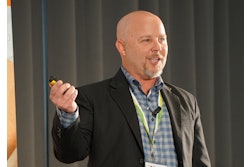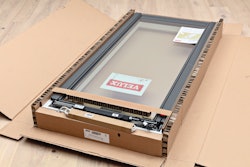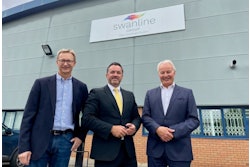Want to stay ahead in the E-Commerce market? Watch the full free video here: Designing a Sustainable E-Commerce Package in Today’s Competitive Packaging Landscape
Listen to the story here:
 | Read the transcript below: |
Matt Reynolds: Hello, welcome to today's webinar. I'm Matt Reynolds, editor of Packaging World Magazine, and I'm here with Paul Jenkins, Managing Director of ThePackHub.
Paul Jenkins: Thank you, Matt. I'll be delighted to do this. I think when we initially sort of decided to do this topic, we're looking at a subject in terms of e-commerce which is growing significantly. We've obviously had the COVID pandemic which has changed consumer behavior, possibly permanently. And this combined with a growing desire and need to improve sustainability really means that this topic of sustainable e-commerce packaging examples isn't a hard one to put together. There are lots of different initiatives that we can, we can focus on during this session. And the first one is on a reusable solution, and reusable packaging refillable packaging is one of the big trend areas at the moment in terms of the four or five sustainable activities that brands, retailers, and suppliers are acting upon. And what we have here is a collaboration with five retail companies alongside the National Postal Service of Switzerland, Swiss Post, and then launching a trial project offering reusable packaging for e-commerce applications. The initiative involves cardboard rezippable boxes and wood fiber based rezippable bags. The cardboard boxes are designed to have a life of at least 10 uses, whilst the wood fiber bags should last more than 30. The retail companies, including DM and Intersport, amongst others involved, will begin to use the reusable packs, which consumers simply remove their ordered products from and mail back to their respective companies using the post office, with Swiss Post as part of the collaboration. To observe the level of success the trial brings, there will be a link to review and a questionnaire. You can see a QR code on the boxes there, allowing customers to share their opinions with the companies involved to help improve and refine the offerings. And that's quite an important element to this trial. It's really important to get early doors feedback from consumers, in terms of how they feel this way, and how easy it was, etc. So that I think that's quite a good example of a reusable e-commerce packaging solution in action.
Matt Reynolds: Yeah, and here's one another one that's, you know, down the same alley, I just became aware of it this week. It's called Boox; It's a secondary packaging system designed for e-commerce and D to C channels here in the US. And as new as it was to me, you'll be familiar with some of the brands that are using it. Lululemon, REN Clean Skincare, and Boyish Jeans are on board this product already. And here's how it works; Boox's retail partners ship D to C orders just as usual, using these blue Boox boxes as secondary packaging. You can see the box on the far right side of the screen. Now, all of these boxes feature QR codes. As Paul mentioned, QR codes and getting data back and learnings back on these systems is extremely critical, as is being able to educate that consumer as to how to reuse this - how to actually adhere to the program. So these QR codes are linking to digital instructions that will guide consumers through the return process via one more of - Boox has 10,000 return places across the US in the UK. I haven't seen one of these but they have to exist. Now once returned to Boox, the Boox HQ, the boxes and bags, which I understand we'll talk about those in a second, are refurbished and distributed to partners to be reused over and over again, drastically reducing the need for manufacturing new shipping products. Now, as Paul mentioned cycles, being able to get the most cycles out of these secondary packaging products is extremely critical. There has to be some number depending on the system threshold, where if they get to that number of cycles, then that automatically makes this a more sustainable solution than the predecessor, which may have been just kraft corrugated or recycled kraft corrugated. So it really does hinge on, you know, consumer adherence and people actually using these and sending them back, and being able to get multiple, whatever the number is, dozens or 50 cycles out of these things. But when a Boox product does finally reach the end of its lifecycle, it's broken down into its raw materials. This blue box, for instance, is a mono-material polypropylene. So mono-material is much easier to reuse than laminates. And it's efficiently recycled back to this Boox box or bag. So the reason I found out about this product only, you know, this week was it just made a big announcement: first it's entering the UK market, so Paul, you may see one of these boxes on your doorstep at some point soon. And it also launched this Baag, which is B A A G to go along with the with a theme. And that's for garments or other items that don't require rigid packaging. So that's another, you know, example in what I would call, what it calls itself, styles itself "re-commerce", which I think is a clever way to do it. Another format is Returnity. This is actually a New Balance sports application. But once again, it's in this re-commerce category. In this case, New Balance Team Sports is a division of New Balance that's not necessarily selling direct to an individual consumer, but it's selling to either a sports shop or teams. Like, you know, whether that's, I don't know, a club team or high school sports team, something along those lines. So what they have to do is sample. So sampling means this team may have to, you know, try on or test colors or test shoe sizes. And that means lots and lots of cycles going back and forth. And the more ties across say an entire, I don't know, like a club team that could have, you know, high school all the way up to adult and all the way back down into kindergarten students might be participants. So that's a lot of different shoe sizes, a lot of different uniform sizes. So there's a lot of back and forth between the sports, you know, whatever the distributor might be, which is usually a local sports store, or the consumer itself. But there's a lot of packaging involved in this D to C process. So New Balance kind of made this leap from the traditional corrugated shipper to a reusable format done by Returnity here. And they use a PET fabric design in this case. And again, this is designed to hit a certain number of returns to optimize the system. I believe this was around 50 In this case, and what was interesting here is two knock-on benefits that weren't really expected. First of all, it's a lot better branding than a, you know, plain kraft corrugated, even a printed kraft corrugated. This does look upscale, comparatively. And then it's better compliance or adherence from the consumer. New Balance gets its product back more frequently and in better condition, because it's not like the sports store is just putting this corrugated box back with all of the others, all of its other shipments in the back. And then that box just disappears or ends up going either into, you know, broken down for recycling or landfill, in which case, how is Returnity - or excuse me, how is New Balance going to get their shoes back? So adherence and branding are to kind of knock on benefits that we saw with this. Finally, we wouldn't be able to talk about, you know, returnable or re-commerce if we weren't talking about Loop. Now, normally, we're talking about the primary package, you know when the Haagen Dazs ice cream comes in this beautiful small pack. Well, there's also, beyond the retail element where you're, you know, purchasing the pack at a retail environment and then bringing it back, physically bringing back, there is an e-commerce component too, where you can do your shopping online. And there's this secondary pack, again, a durable pack, that a consumer can, you know, unload their groceries, save this collapsible black, you know, reusable, durable, secondary packaging. And then when that Haagen Daz is finished, which will be very quickly for me, that would be rinsed out, put back into this pack and sent right on back to Loop to be for those packages to then be cleaned and get back into the system in this circular economy. So again, we couldn't have this discussion if we didn't mention Loop. So those are just three examples of, or actually four examples, I believe, what I would call re commerce, but we've got a lot of ground to cover. So Paul, maybe we should move right on.
Paul Jenkins: So this is another German transport solution provider called Trans-o-Flex, and we're back to reusable packaging. So the business has been offering its customers the choice of using reusable boxes, rather than single use shipping containers. The option is suggested as part of their express service under the name tof.ecobox, and is said to save more than 50% in CO2 emissions. So that CO2 emission claim going on again. The ecobox was developed in conjunction with Smart Container Loop, part of the Schoeller Group and, who are also part owners of Trans-o-Flex, with experience in returnable container systems. The drivers take the empty boxes from the recipients when they deliver a new shipment. To ensure that the transport process is precisely documented. The driver is guided through the pickup process via a handheld scanner. The number and size of the boxes returned are recorded and acknowledged. In this way, Trans-o-Flex always knows where the containers are located. And I think that's quite an important sort of final piece for me in terms of how technology is also playing its part in the e-commerce world. We've got smartphones now, which is an automatic receiver for QR codes and for NFC and RFID tags and things like that. So the ability for smart and intelligent packaging to have its place and its role in in e-commerce packaging solutions shouldn't be overlooked.
























